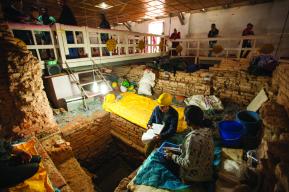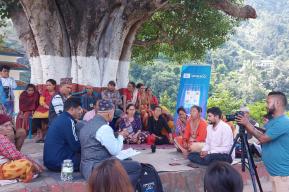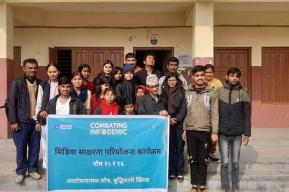The Swayambhu Religious Complex, which includes one of the oldest Buddhist monuments in the valley, incurred particularly serious harm.
The caitya (or stupa) of Mangal Bahudwar, also known in Tibetan as the Tashi Gomang stupa, built in the 19th century in a unique architectural style, collapsed completely, burying tens of thousands of sculptures and religious artefacts under the rubble.
In collaboration with the local communities of Swayambhu, the Swayambhu Federation for Management and Conservation and the Department of Archaeology of Nepal, UNESCO first carried out damage assessment and emergency safeguarding measures. Next, an inventory was compiled of the sculptures and votive objects recovered from the debris.
More than 100,000 miniature stupas (tsha-tsha) and several hundred rare and sacred objects (stone statues, semi-precious stone beads, small bronze caityas, gold coins, a reliquary, etc.) were methodically photographed, listed, restored and gradually placed back into the caitya as it was rebuilt.
This reconstruction would have been impossible without the exemplary cooperation of UNESCO experts, specialists from the Department of Archaeology and all the local community members who are deeply involved in their heritage’s restoration: craftsmen, masons, priests from Swayambhu (the Buddhacharyas) and volunteer students from Tribhuvan University. Financial support from the Chinese Hainan Province Cihang Foundation and the Fok Ying Tung Foundation, based in Hong Kong, was also crucial.
Religious rituals, testimony to a living spiritual heritage, accompanied the restoration work. The Kshyama Puja ritual, a rite of forgiveness, was performed when the work began, and the Jeev-Nyas Puja ritual marked its completion and the return of the stupa deity.

The monument has now regained its rightful place at the heart of the Swayambhu site. For the priests and the entire local community, it was the long-awaited return to a normal daily life in which traditions and ritual practices are omnipresent, and monumental and intangible heritage closely intertwined. Thousands of worshippers and visitors can once again circulate and pray at the stupa. And the monkeys, long-time residents, are once again scampering around the sanctuary’s decorative shrines.









